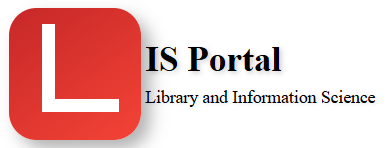Library pathfinders, also known as library guides or research guides, are tools created by librarians to help users navigate a particular topic or subject area. These guides can take many forms, such as web pages, PDFs, or multimedia presentations.
The purpose of a library pathfinder is to provide users with a curated list of resources that are relevant to their research needs. This can include books, articles, databases, websites, and other resources that are available through the library or online. The pathfinder may also include tips on how to search for information, evaluate sources, and cite references correctly.
Library pathfinders are often organized by subject, course, or research topic. They can be created for a variety of audiences, including students, faculty, and researchers. The guides may be designed to support a particular assignment or project, or to provide users with a broad overview of a subject area.
In many cases, library pathfinders are made available online through the library’s website. This makes them accessible to users who are unable to visit the physical library or who prefer to conduct research online. Library pathfinders can be a valuable resource for students and researchers, as they can save time and help them to find high-quality information more quickly and efficiently.
Some Tools of Library pathfinders (Guides)
There are many different tools that can be used to create library pathfinders (guides). Some of the most common tools include:
LibGuides: LibGuides is a web-based platform that allows librarians to create and publish online guides to help users navigate research topics. It includes a variety of features, such as drag-and-drop content creation, custom branding, and analytics tracking.
WordPress: WordPress is a popular website creation tool that can be used to create library pathfinders. It is highly customizable and includes a variety of templates and plugins that can be used to enhance the user experience.
Microsoft Word: Microsoft Word is a word processing program that can be used to create printable pathfinders in PDF format. It is a simple tool that can be used by librarians who may not have extensive web development skills.
Google Sites: Google Sites is a web-based tool that allows users to create simple websites. It is easy to use and can be a good option for librarians who are new to creating online guides.
HTML and CSS: Some librarians may choose to create pathfinders using HTML and CSS coding. This allows for greater customization and flexibility, but requires more technical knowledge.
Springshare’s LibWizard: LibWizard is a tool from Springshare, the company behind LibGuides, that allows librarians to create interactive online tutorials, quizzes, and surveys. It can be used to create engaging and interactive pathfinders that help users learn about research skills and library resources.
Prezi: Prezi is a web-based presentation tool that allows users to create dynamic and engaging presentations. It can be used to create visual pathfinders that are more engaging than traditional PDF documents.
Adobe InDesign: Adobe InDesign is a professional desktop publishing tool that can be used to create visually appealing pathfinders with a high level of customization. It can be used to create both print and digital pathfinders.
Canva: Canva is a web-based graphic design tool that allows users to create beautiful designs with a variety of templates and customizable elements. It can be used to create visually appealing pathfinders that are easy to read and engaging.
Google Docs: Google Docs is a free, web-based word processing program that can be used to create printable pathfinders. It includes a variety of formatting and design options, as well as collaboration features that allow multiple librarians to work on the same guide.
These are just a few more examples of the many tools that can be used to create library pathfinders. The choice of tool will depend on the needs and goals of the library, as well as the technical skills and resources of the librarian creating the guide.
